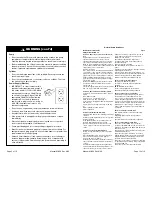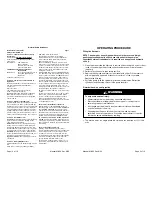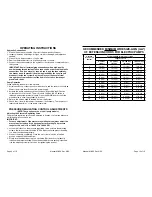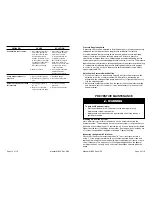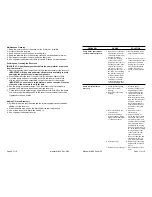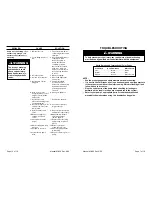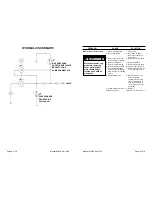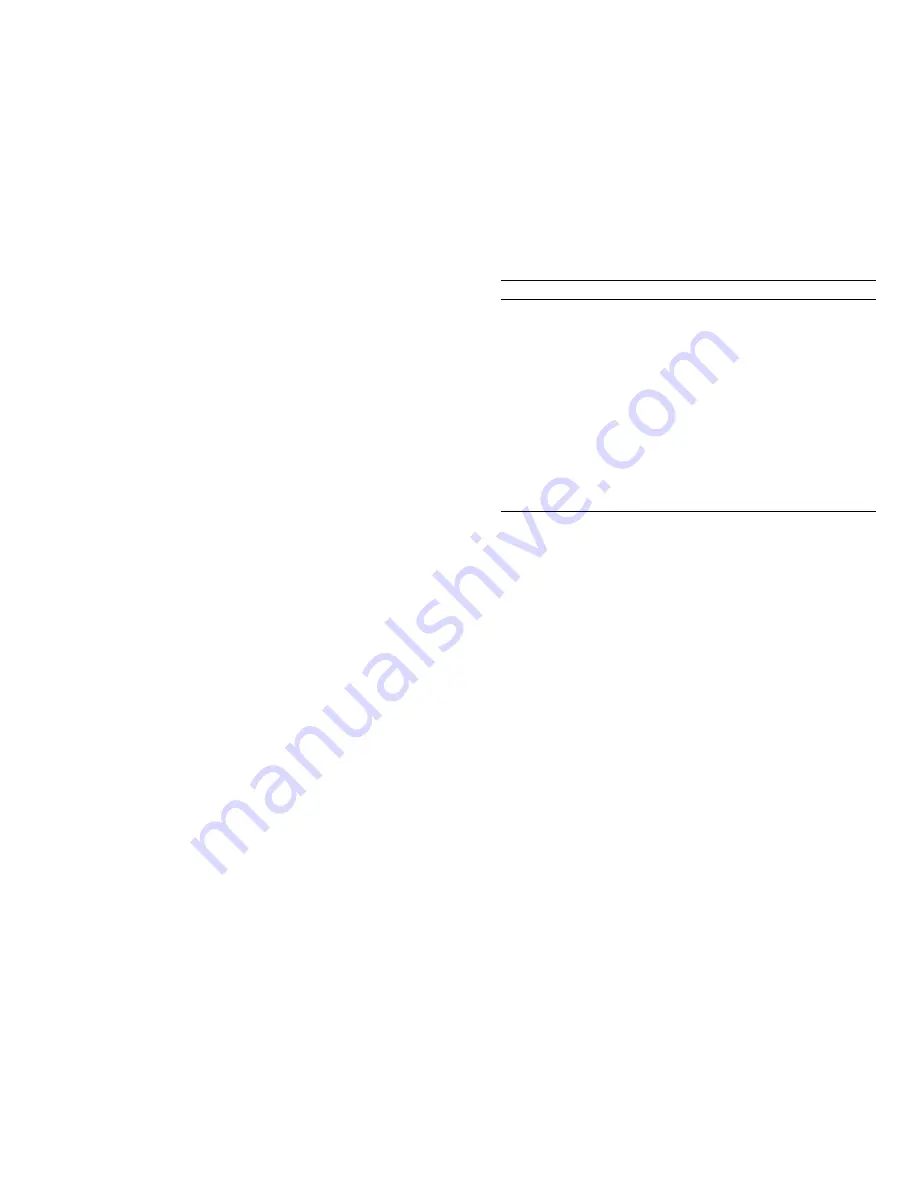
Manual M-800 Rev. 6/09
Manual M-800 Rev. 6/09
Page 11 of 16
PROBLEM
CAUSE
SOLUTION
Pump builds pressure but
cannot maintain pressure.
1. Check to see if there are
any external leaks. If no
oil leakage is visible, the
problem is internal.
2. To test for a leaking
control valve, lift the
pump from the reservoir
but keep the filter in the
oil. Remove the drain
line to see if the oil is
leaking from the valve. If
the valve is not leaking,
the internal check valve
could be leaking. Refer
to the note concerning
checking for oil leaks
at the beginning of this
Troubleshooting Guide.
1. Reseal leaking pipe fit-
tings with pipe sealant.
2. Clean, reseat or replace
control valve parts. If the
internal check valve is
leaking, the check valve
must be disassembled
and the seat area re-
paired, poppet replaced,
etc.
Pump will not build full
pressure.
1. Faulty pressure gauge.
2. Check for external
leakage.
3. Check the relief valve
setting.
4. Check for leaks in the
solenoid valve.
5. Inspect the pump for
internal leakage. Check
high pressure pump inlet
or outlet ball checks.
6. Sheared key(s).
7. Automatic valve leakage.
1. Calibrate gauge.
2. Seal any faulty pipe fit-
ting with pipe sealant.
3. Lift the pump from the
reservoir but keep the
filter immersed in oil.
Note the pressure read-
ing when the relief valve
begins to open up. If
functioning normally, it
should start to leak off
just prior to relief valve
pressure.
4. Clean and reseat or
replace parts.
5. Same procedure as
above but look for leaks
around the entire inner
mechanism. If there are
no visible leaks, the high
pressure pump subas-
sembly may be leaking.
Remove all parts. Check
the valve head assembly
for any damage to the
seat area. Clean and
reseat if necessary.
Inspect for damage and
replace parts if neces-
sary, then reassemble.
6. Replace after checking
pump cavity for broken
pieces.
7. Check automatic valve
seat.
Adding Oil to the Reservoir
1. Cylinder(s) must be fully retracted and the power supply disconnected when
adding oil to the reservoir.
2. Clean the entire area around the filler cap before removing the cap.
3. Use a clean funnel with filter when adding oil.
4. Use only approved hydraulic fluids.
Maintenance Cleaning
1. Keep the outer surface of the pump as free from dirt as possible.
2. Protect all unused couplers.
3. Keep all hose connections free of dirt and grime.
4. Keep the breather hole in the filler cap clean and unobstructed at all times.
5. Equipment connected to the pump must be kept clean.
6. Use only approved hydraulic fluids in this pump. Change as recommended.
Draining and Cleaning the Reservoir
IMPORTANT: Clean the pump exterior before the pump interior is removed
from the reservoir.
1. Remove the screws that fasten the motor and pump assembly to the reservoir.
IMPORTANT: Lift the pump and motor off the reservoir carefully to avoid
damaging the gasket or any internal components.
2. Clean the inside of the reservoir and fill half full with clean hydraulic fluid.
3. Place the pump and motor assembly back onto the reservoir and secure
with two machine screws assembled on opposite corners of the housing.
IMPORTANT: Connect a hose to the pressure port on the valve. Place the
other end of the hose into the oil filler hole.
4. Run the pump for several minutes. Then disconnect the motor and pump
assembly, and drain and clean the inside of the reservoir.
5. Fill the reservoir with a high-quality, approved hydraulic fluid. Place the pump
and motor assembly (with gasket) on the reservoir and install all the screws.
Tighten securely and evenly.
Page 6 of 16


